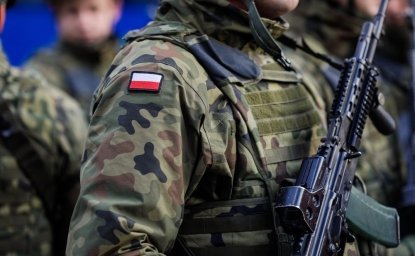In the last year, the Baltic Sea has grown in importance as a laboratory for Russian hybrid threats against NATO Allies. From GPS jamming, sabotage of critical undersea infrastructure, to attempts to redraw the boundaries of territorial waters, the Baltic Sea is experiencing more malign activities as a revanchist Russia wages war against Ukraine. The threats facing the Baltic Sea region are myriad and varied, requiring a high degree of vigilance. NATO has stepped up surveillance, issuing a statement warning of an intensifying campaign of hybrid activities in the region. Although the region is more secure than ever, bolstered by the addition of Finland and Sweden to the NATO Alliance, the upcoming NATO Summit in Washington must underscore the Alliance’s ironclad commitment to the Baltic Sea region and address the rise of hybrid threats in the region.
What hybrid threats have NATO Allies recently experienced in the Baltic Sea region?
Some experts have referred to the Baltic Sea as a NATO lake since the addition of Sweden and Finland as NATO allies, as every country along the Baltic Sea besides Russia is a NATO member. However this claim undersells the importance of Russian military presence in the region, in particular the highly militarized Kaliningrad region and its major port in St. Petersburg. Although the inclusion of Finland and Sweden in the alliance dramatically increases the Alliance’s capabilities in the Baltic Sea, Russia continues to bombard the region with tests.
A noticeable uptick in GPS jamming and spoofing has been reported in the Baltic Sea, disrupting flights in the region. A Hong Kong flagged vessel, Newnew Polar Bear, damaged the Balticconnector undersea cable and pipeline between Finland and Estonia. Finland closed its land border with Russia after a wave of third country nationals seeking asylum arrived, spurred on by Russia. In the last few weeks, the Russian Ministry of Defense leaked a memo expressing the desire to redraw maritime boundaries in the Baltic Sea.
In addition to intimidating Ukraine’s European allies, Russia’s increased hybrid activity around the Baltic Sea can also be interpreted as direct retribution for Sweden and Finland joining as NATO’s newest member states. Both Sweden and Finland are highly capable allies and greatly enhance the Alliance’s ability to patrol the Baltic Sea. Sweden is especially oriented towards maintaining the security and stability of the Baltic Sea. Sweden has doubled its defense budget from 2020 to 2024 as a result. In addition to air and marine capabilities, Sweden also brings a wealth of expertise operating submarines in the shallow and brackish Baltic Sea. Sweden’s knowledge of the topography and particularities of the sea makes it an extremely capable actor in securing the Baltic Sea. With two submarines under construction, the Blekinge-class submarines, to complement their existing fleet of submarines, Sweden will only continue to grow as a new NATO ally.
Why does Russia engage in hybrid activities in the Baltic Sea?
Russia uses hybrid tactics to intimidate NATO countries and their partners, in particular those countries in Russia’s declared “sphere of influence” that develop close relationships Western institutions. The Baltic Sea is crucial from a Russian security perspective because it provides a maritime route connecting the exclave of Kaliningrad with the mainland. Countries of the Baltic Sea region are also the only NATO members that share a land border with Russia, and the addition of Finland to the Alliance has brought NATO military capabilities even closer to Putin’s doorstop with its 1300 km shared border.
The hybrid techniques that Russia is employing in the Baltic Sea region are not new. The Baltic Sea states have been frequent targets of Russian hybrid influence, but Russia’s invasion of Ukraine has run parallel with a significant increase in activities, as well as the introduction of some tactics that are new to the Baltic Sea region. For example, the recent Russian Defense Ministry memo that unilaterally redefined its border in the Baltic Sea could be interpreted as a maritime version of borderization - a hybrid technique that Russia has used to illegally seize territory from Georgia since the Russo-Georgian war in 2008.
By pursuing its security objectives using methods of influence that fall below the threshold of a traditional armed attack, Russia’s goal is to destabilize Allied countries without triggering NATO’s Article 5. This is a tricky needle to thread, since the Alliance has stated since 2016 that hybrid actions against a NATO member can lead to the invocation of Article 5. But what kind of hybrid attack would be enough to trigger collective action is still an open question, as nothing Russia has done to this point has evoked that reaction from NATO.
Despite the lack of kinetic warfare, NATO allies cannot ignore the fact that Russian hybrid measures undermine the Alliance’s collective security and signal the potential for future confrontation. In countries including Georgia and Ukraine, Russia has effectively used information manipulation, attacks on critical infrastructure, and other hybrid threats as a destabilizing force to prepare the battlefield for military intervention. The progression of Russian hybrid and covert tactics in eastern Ukraine starting in 2014 to Russia’s full military invasion in 2022 serves as one example of how hybrid threats can escalate to military conflict.
What can NATO do to prevent malign Russian activities in the region?
In its effort to prevent hybrid threats in the Baltic Sea from spilling over into a larger incident, the NATO Alliance operates as a toolkit in the region, lending expertise and pooling knowledge. The European Centre for Excellence for Countering Hybrid Threats (Hybrid CoE), located in Helsinki and accredited to the European Union and supported by NATO, promotes a whole-of-society approach to countering hybrid threats in the Baltic Sea region. The Hybrid CoE organizes communities of security practitioners to promote information sharing across participating states, produces original research and analysis, and facilitates training exercises to improve member responses to hybrid incidents. Further alignment of NATO allies and practices can close gaps Russia may attempt to exploit through misinformation or sabotage.
Last year’s NATO Summit in Vilnius saw the launch of the Maritime Centre for the Security of Critical Undersea Infrastructure within NATO’s Maritime Command, highlighting the Alliance’s awareness of the vulnerability of underwater infrastructure. Despite this attention, the Balticconnector pipeline incident showed the difficulty in patrolling undersea infrastructure. Heading into the Washington Summit, the NATO Alliance needs to ramp up its engagement and policies towards hybrid threats. One solution to enhance Alliance preparedness in facing hybrid threats is to strengthen Alliance resilience, a tenant of Article 3 further enhanced at the 2016 Warsaw Summit. The 2024 NATO Summit offers an opportunity to further enshrine resilience and establish updated baselines for Alliance preparedness as a whole.
Opportunity Ahead
The last year of Russia’s malign activities in the Baltic Sea demonstrate it will continue to probe and search for weaknesses. The upcoming Washington Summit offers the opportunity for NATO leaders to enhance their presence in the Baltic Sea, strengthen resilience, set clear expectations for their response to continued hybrid threats, and to confront other security concerns in the region. For example, there are still at least 40,000 unexploded sea mines in the Baltic Sea, a remnant of World War II, many of which pose a looming environmental catastrophe as they are leaking toxic chemicals. Signal jamming and other hybrid threats make already risky projects like de-mining even more precarious. For the sake of Alliance members and the overall safety of the region, NATO must continue to monitor and share information on hybrid threats, support Allies in their work to identify and fix national vulnerabilities, and act in coordination with members to deter active hybrid operations. In doing so, NATO demonstrates that it is truly committed to defend any Ally against any threat.
Authors



Global Europe Program
The Global Europe Program is focused on Europe’s capabilities, and how it engages on critical global issues. We investigate European approaches to critical global issues. We examine Europe’s relations with Russia and Eurasia, China and the Indo-Pacific, the Middle East and Africa. Our initiatives include “Ukraine in Europe”—an examination of what it will take to make Ukraine’s European future a reality. But we also examine the role of NATO, the European Union and the OSCE, Europe’s energy security, transatlantic trade disputes, and challenges to democracy. The Global Europe Program’s staff, scholars-in-residence, and Global Fellows participate in seminars, policy study groups, and international conferences to provide analytical recommendations to policy makers and the media. Read more


Kennan Institute
After more than 50 years as a vital part of the Wilson Center legacy, the Kennan Institute has become an independent think tank. You can find the current website for the Kennan Institute at kennaninstitute.org. Please look for future announcements about partnership activities between the Wilson Center and the Kennan Institute at Wilson Center Press Room. The Kennan Institute is the premier US center for advanced research on Eurasia and the oldest and largest regional program at the Woodrow Wilson International Center for Scholars. The Kennan Institute is committed to improving American understanding of Russia, Ukraine, Central Asia, the South Caucasus, and the surrounding region through research and exchange. Read more

Explore More
Browse Insights & Analysis
Trump Speaks with Putin in Effort to End Russia-Ukraine War

From Partner to Ally: Sweden’s First Year in NATO

“Security, Europe!”: Poland's Rise as NATO's Defense Spending Leader

